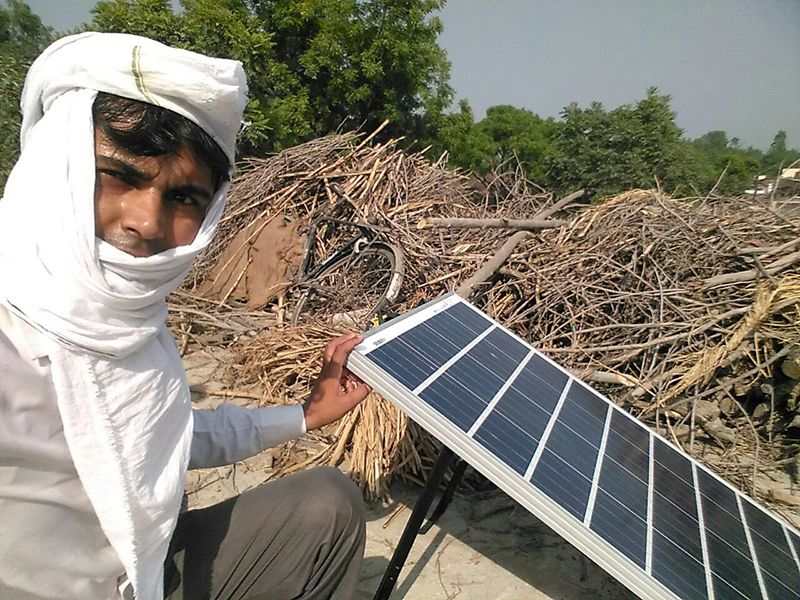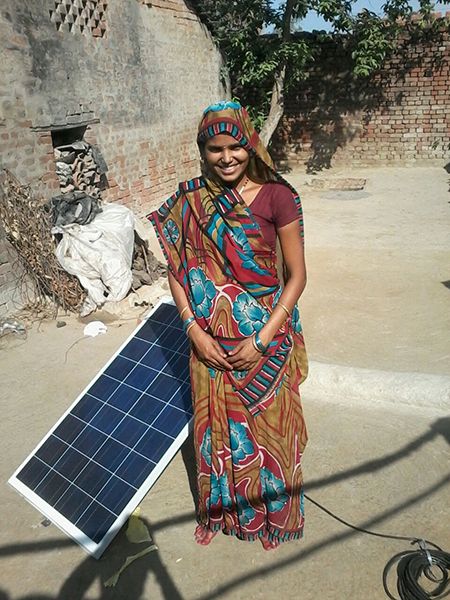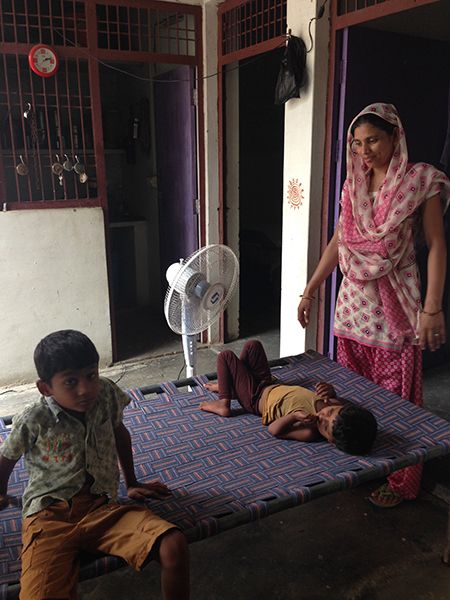Is Rent-to-Own Solar Power the Answer?
A Canadian entrepreneur is using a business model familiar from ‘70s daytime TV to get Indians to embrace solar
/https://tf-cmsv2-smithsonianmag-media.s3.amazonaws.com/filer/31/cc/31ccfcda-616e-4ab3-afb7-3fa4a2a2d092/simpa-networks-1.jpg)
Dressed in a teal green dhoti and a white undershirt, 63-year-old Kisan Singh chuckles when he’s asked how many hours of a typical day the village of Ranchi Bangar gets electricity from the power grid.
“At night, light comes from 10 p.m. to 4 a.m., so we can watch television and run the refrigerator and water pump,” he says, with a lopsided grin. “In the daytime, it’s anybody’s guess.”
Retired from the local government irrigation department, Singh lives with his son, daughter-in-law and grandsons in a squat brick house about 100 miles southeast of India’s capital, New Delhi. It’s a simple four-room dwelling—practically windowless, with brick walls and bare concrete floor, a few pots and pans stored on shelves, and plastic lawn chairs and nylon cots as the only furniture.
When it comes to green energy, however, the little house could well represent India’s future.
For a little more than a year, the family has been supplementing the sporadic electricity the village gets from the grid with solar energy, thanks to a new pay-as-you-go business model pioneered by Canadian entrepreneur Paul Needham and his company, Simpa Networks. Call it “rent-to-own solar.”

Needham is a serial tech entrepreneur whose online advertising company BidClix made its way into the portfolio of Microsoft. As a doctoral student in economics at Cambridge, he was obsessed with the reasons customers will shell out for certain products and not others. One of the questions that always bugged him was, “Why don’t I own solar panels?” The reason, he determined, was the high up-front costs.
Imagine if mobile phone service was sold like solar energy. From an operator’s perspective, it would have made great sense to try to sell customers 10 years of phone calls in advance, so as to quickly earn back the money invested in building cell towers. But the person who suggested such a strategy would have been fired immediately, Needham says.
“You want to charge people for what they value, not the technology that’s providing it,” he says in a telephone interview.
Realizing that the poorer the consumer, the more that axiom holds true, Needham teamed up with two microfinance experts about five years ago to develop small solar house systems for sale in India on a pay-as-you-go model. Today, they’ve installed systems in more than 20,000 homes and created 300 full-time jobs, as well as opportunities for 500-odd technicians and “solar entrepreneurs” who sell services based on having electricity in their shops or homes.
With $11 million in financing from various venture capitalists, as well as organizations like the Asian Development Bank and USAID, the company is scaling up fast—now growing its customer base by around 10 percent a month. The target is 1 million solar rooftops in rural India by 2019. With a little tweaking, the model could work in other developing countries, even in sophisticated markets like the U.S., Needham says. It’s actually been applied with some success in the U.S., he explains, but companies face issues due to the financing side of it. Entrepreneurs have to invest in equipment up front and only realize payments over time, so it's easy to go bust if they don't have enough capital.

Simpa’s solution borrows from prepaid cell service and the “rent-to-own” schemes notorious for fleecing poor Americans desperate for a television—turned to a good end.
With the most basic system, customers get a 40 watt solar panel, a 26 amp-hour battery, two LED lights, a 15-watt electrical outlet for appliances and two ports to charge or power USB devices—all of which operate using direct current (DC), so no inverter is necessary. The blue rooftop panel is about the size of a card table, angled toward the sun. The meter looks a bit like a car battery, with an e-ink readout to show how many “days” balance is remaining. It comes with special LED tube lights, about half the size of the schoolroom fluorescents we're used to, and a freestanding electric fan.
It costs about $270 to buy the system outright and get free electricity for an estimated 10 years. But most customers choose a pay-as-you-go contract that allows them to purchase the kit in monthly payments over two or three years. Over three years, that means paying an extra 50 percent for the system. But the small payments are easy to manage, and the arrangement makes customers confident that the company will keep the equipment working, so as to get paid. The pay-as-you-go system also features on-site service and an extended warranty.
That’s proven to be vital, because do-gooders and fly-by-night companies alike have in the past failed to maintain systems installed with loans or charitable funds, sowing general distrust in solar, Needham says.
“When the batteries need to be topped up or there’s a little problem with the wiring, those systems just stop working,” he says.

With the pay-as-you-go scheme, customers typically pay 15 to 30 U.S. cents a day to power a fan, three lights and a mobile phone charger. They can see how many days they have remaining by pressing a button on the keypad of their meter, and call a customer service rep to take a top-up payment anytime, with cash-back bonuses for bulk purchases. About 10 percent choose to buy the system outright after six months or so, Needham said, and everybody is attracted to the idea that their payments are going toward a purchase.
“What we found was that most people wanted to own the equipment themselves; they didn’t just want to keep paying to use it,” Needham says.
Apart from helping India in its battle to lower greenhouse gas emissions and relieving the strain on its overburdened power grid, the business could play an important role in reducing poverty, he believes.

Worldwide, approximately 1.6 billion people have no access to electricity and another 1 billion have extremely unreliable access, according to a Simpa case study. The poorest spend up to a third of their income on kerosene and access to third-party electricity—a whopping $38 billion for kerosene and $10 billion to charge their cell phones. That means over the 10-year lifespan of one of Simpa’s more advanced $400 solar systems, a typical user would have spent $1,500 to $2,000 on kerosene, candles, batteries and phone charging. Meanwhile, they’ll have missed out on economic benefits associated with electrification, including increasing income-generating working hours and improving school performance.
“Before we got the solar system, I was cooking in the dark,” says 26-year-old Anjali Gehlot, Singh's daughter-in-law. “We were using candles and kerosene lamps. My children weren’t able to study at night or they weren’t able to sleep because there was no fan.”
With temperatures soaring to more than 104 degrees Fahrenheit for almost half the year in Ranchi Bangar, that’s a huge selling point. So much so that Gehlot prevailed on her husband to have a second “Turbo 240” system—the number 240 refers to its two 40-watt panels—installed three months earlier.
In total, the family now pays about $24 a month for solar power—about 15 percent of what Gehlot spends to feed a family of five—as a result. But the added comfort is more than worth that price, she says.
“It’s cheaper than the bill for the grid electricity,” Gehlot says.
And the light always comes on when she flicks the switch.